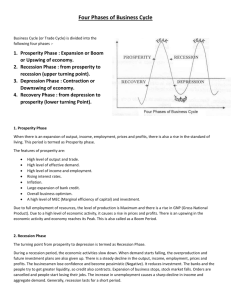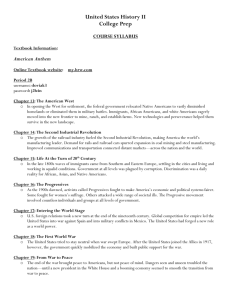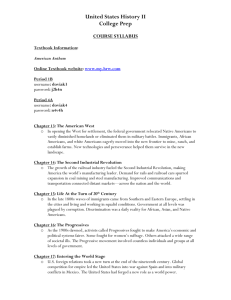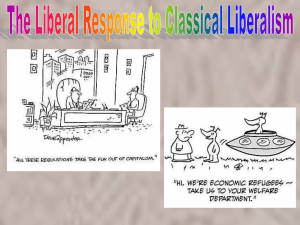Four Phases of Business Cycle Business Cycle (or Trade Cycle) is
advertisement
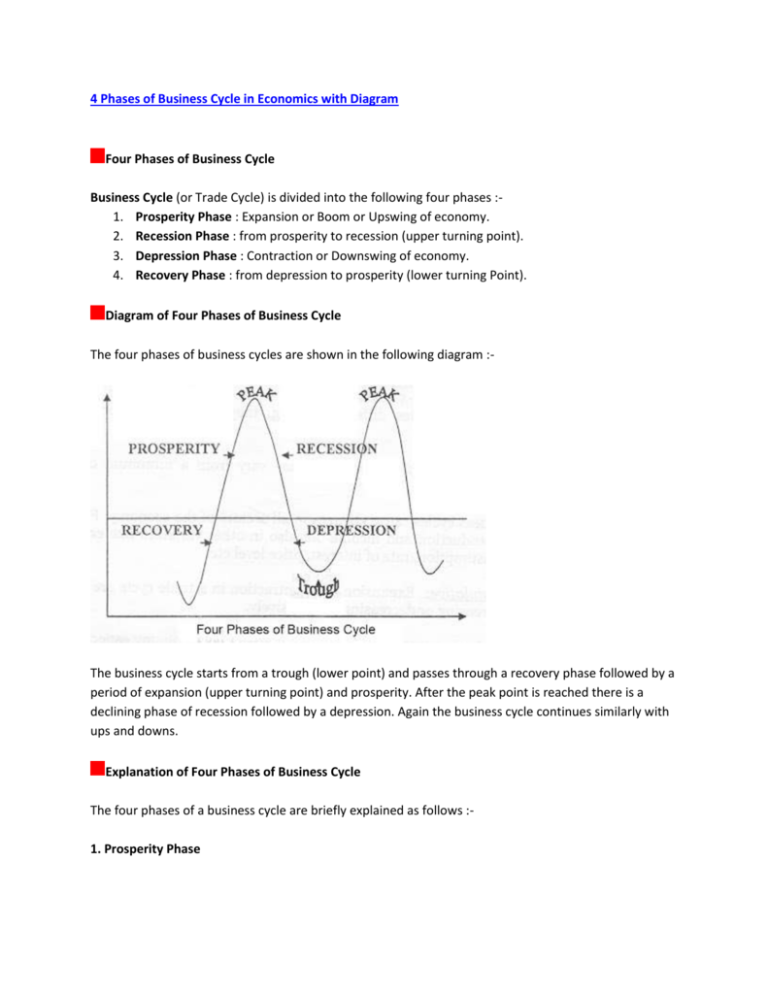
4 Phases of Business Cycle in Economics with Diagram Four Phases of Business Cycle Business Cycle (or Trade Cycle) is divided into the following four phases :1. Prosperity Phase : Expansion or Boom or Upswing of economy. 2. Recession Phase : from prosperity to recession (upper turning point). 3. Depression Phase : Contraction or Downswing of economy. 4. Recovery Phase : from depression to prosperity (lower turning Point). Diagram of Four Phases of Business Cycle The four phases of business cycles are shown in the following diagram :- The business cycle starts from a trough (lower point) and passes through a recovery phase followed by a period of expansion (upper turning point) and prosperity. After the peak point is reached there is a declining phase of recession followed by a depression. Again the business cycle continues similarly with ups and downs. Explanation of Four Phases of Business Cycle The four phases of a business cycle are briefly explained as follows :1. Prosperity Phase When there is an expansion of output, income, employment, prices and profits, there is also a rise in the standard of living. This period is termed as Prosperity phase. The features of prosperity are :1. High level of output and trade. 2. High level of effective demand. 3. High level of income and employment. 4. Rising interest rates. 5. Inflation. 6. Large expansion of bank credit. 7. Overall business optimism. 8. A high level of MEC (Marginal efficiency of capital) and investment. Due to full employment of resources, the level of production is Maximum and there is a rise in GNP (Gross National Product). Due to a high level of economic activity, it causes a rise in prices and profits. There is an upswing in the economic activity and economy reaches its Peak. This is also called as a Boom Period. 2. Recession Phase The turning point from prosperity to depression is termed as Recession Phase. During a recession period, the economic activities slow down. When demand starts falling, the overproduction and future investment plans are also given up. There is a steady decline in the output, income, employment, prices and profits. The businessmen lose confidence and become pessimistic (Negative). It reduces investment. The banks and the people try to get greater liquidity, so credit also contracts. Expansion of business stops, stock market falls. Orders are cancelled and people start losing their jobs. The increase in unemployment causes a sharp decline in income and aggregate demand. Generally, recession lasts for a short period. 3. Depression Phase When there is a continuous decrease of output, income, employment, prices and profits, there is a fall in the standard of living and depression sets in. The features of depression are :1. Fall in volume of output and trade. 2. Fall in income and rise in unemployment. 3. Decline in consumption and demand. 4. Fall in interest rate. 5. Deflation. 6. Contraction of bank credit. 7. Overall business pessimism. 8. Fall in MEC (Marginal efficiency of capital) and investment. In depression, there is under-utilization of resources and fall in GNP (Gross National Product). The aggregate economic activity is at the lowest, causing a decline in prices and profits until the economy reaches its Trough (low point). 4. Recovery Phase The turning point from depression to expansion is termed as Recovery or Revival Phase. During the period of revival or recovery, there are expansions and rise in economic activities. When demand starts rising, production increases and this causes an increase in investment. There is a steady rise in output, income, employment, prices and profits. The businessmen gain confidence and become optimistic (Positive). This increases investments. The stimulation of investment brings about the revival or recovery of the economy. The banks expand credit, business expansion takes place and stock markets are activated. There is an increase in employment, production, income and aggregate demand, prices and profits start rising, and business expands. Revival slowly emerges into prosperity, and the business cycle is repeated. Thus we see that, during the expansionary or prosperity phase, there is inflation and during the contraction or depression phase, there is a deflation.
